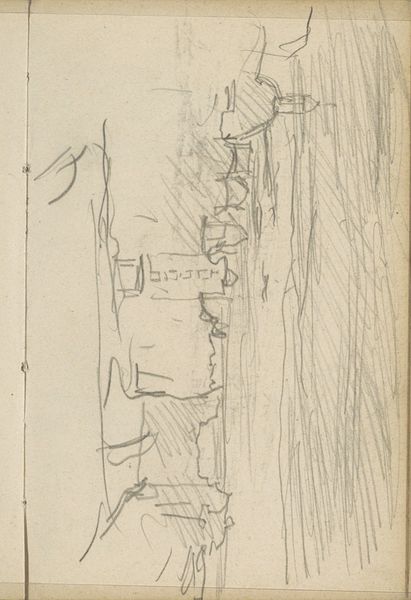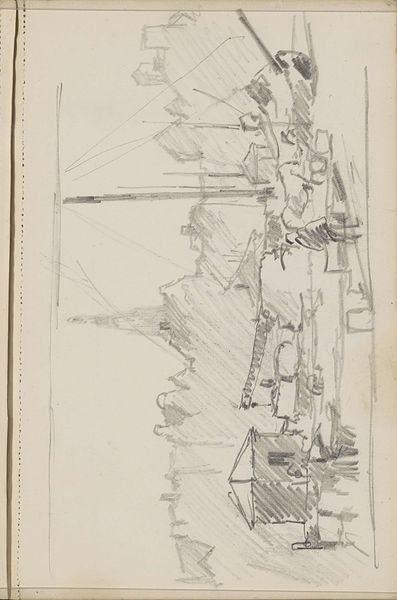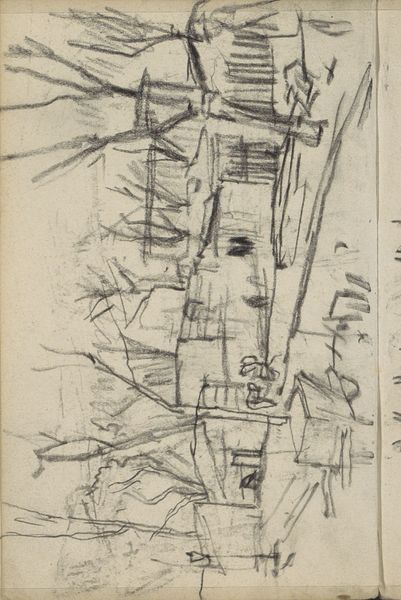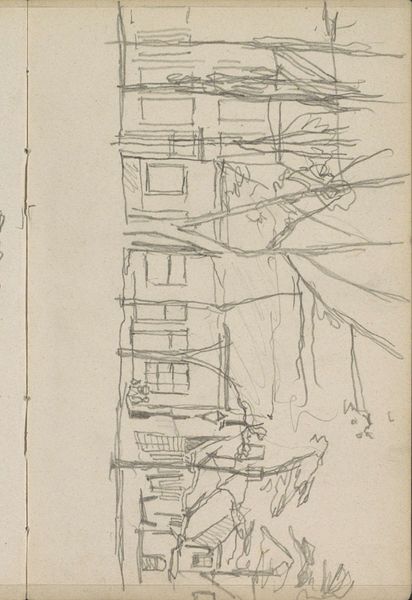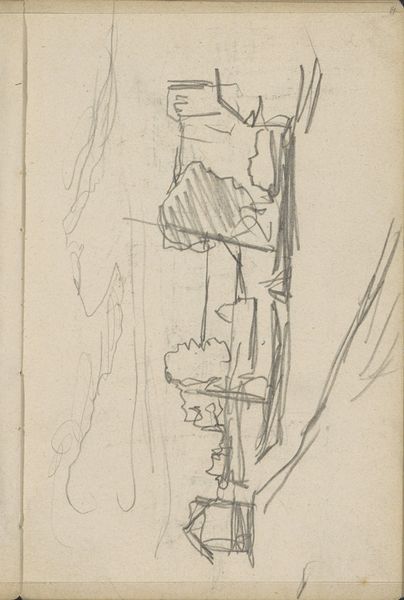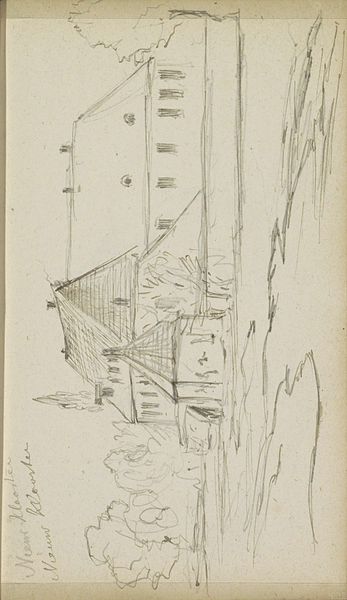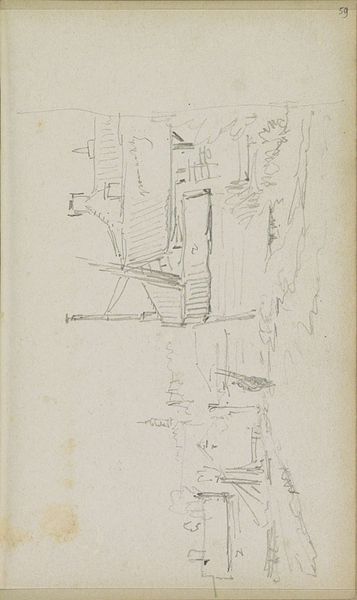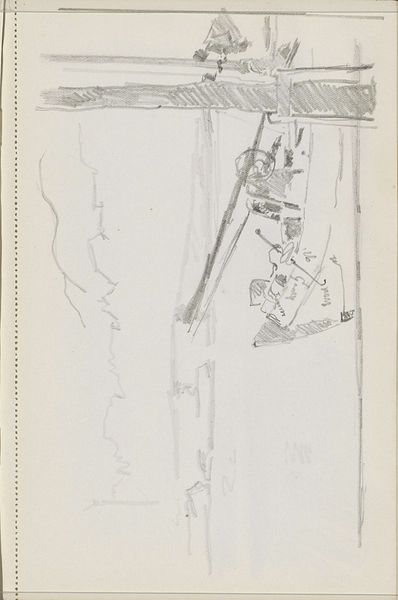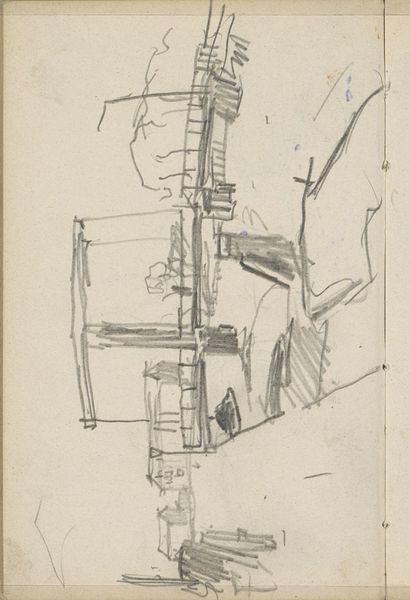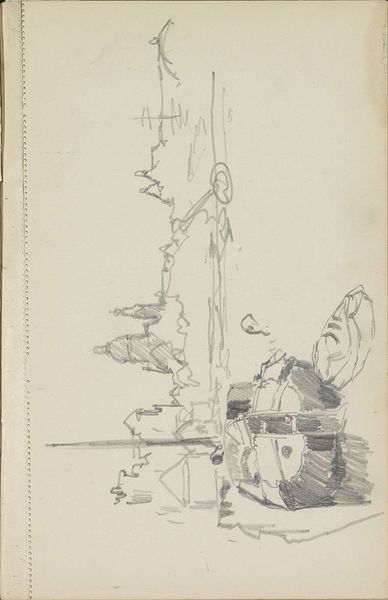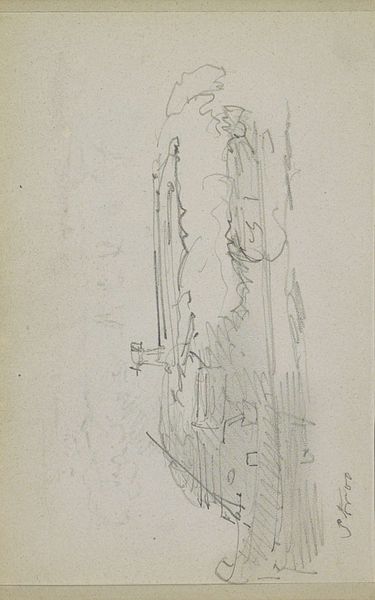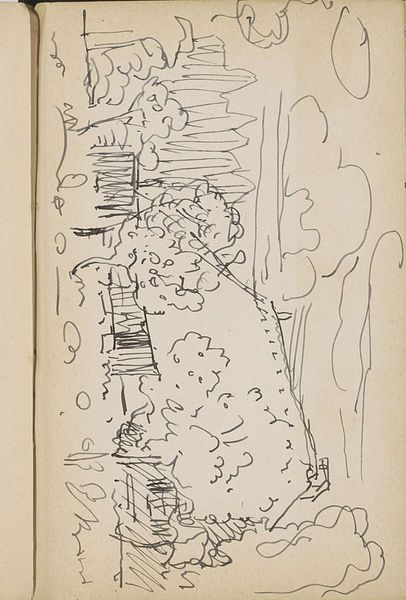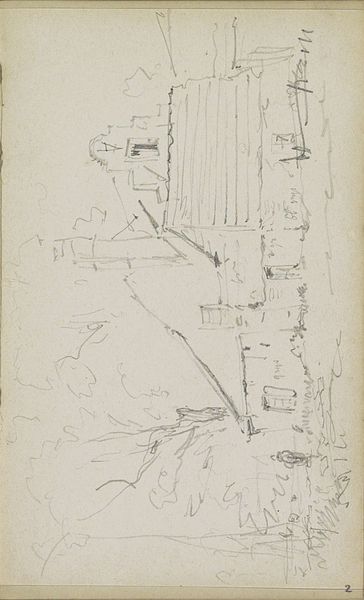
Handkarren op de Stadhouderskade te Amsterdam ter hoogte van het Vondelpark c. 1903
0:00
0:00
georgehendrikbreitner
Rijksmuseum
Copyright: Rijks Museum: Open Domain
Curator: So, here we have George Hendrik Breitner’s “Handkarren op de Stadhouderskade te Amsterdam ter hoogte van het Vondelpark," circa 1903. What are your initial thoughts? Editor: Well, it's a quick sketch, seemingly a pencil drawing. It feels immediate and captures a slice of everyday life. I’m curious, what can we learn from such a simple piece? Curator: It is simple, isn't it? But look closer. Breitner was interested in documenting the bustling city, not just its grand facades but its working class and the labor that sustained it. Consider the "handkarren"—the handcarts. These weren't just modes of transport; they were tools of the working class, pushing goods, hauling materials. The materiality of urban life is often hidden. Breitner is revealing the unseen work that goes into creating the social spectacle. Editor: So, it's about revealing the often-unseen side of urban life? How does the medium itself—the pencil sketch—contribute to that? Curator: Precisely! A quick sketch like this mirrors the transient, ephemeral nature of labor. It wasn’t about producing a polished, marketable artwork, but about capturing a fleeting moment of work and industry. Think of the economic reality—this sketchbook would have been affordable and portable. It brings the artistic process closer to everyday production. Editor: That makes a lot of sense. It feels more like a snapshot than a formal portrait, more about documenting reality. I hadn't thought about the class implications of the sketch itself, its portability or even disposability. Curator: And what do you make of the location? Stadhouderskade. A thoroughfare, a space for the transaction of goods and labour. This is where raw materials meets social mobility in its various different directions, both up and down. Editor: Right, it gives you a lot to think about the means of production in an art piece. Thank you! Curator: Indeed! Seeing how an artwork engages with labor and material processes changes how we value not just the image, but also the world it reflects.
Comments
No comments
Be the first to comment and join the conversation on the ultimate creative platform.
